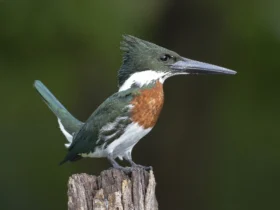In the lush rainforests of Central and South America, a tiny jewel of the avian world captures the attention of birdwatchers and nature enthusiasts: the Golden-Hooded Tanager (Tangara larvata). With its striking colors and enchanting melodies, this small songbird is a true delight to behold. In this article, we will explore the captivating world of the Golden-Hooded Tanager, discovering its appearance, habitat, behavior, and the unique characteristics that make it a cherished species.
Golden-Hooded Tanager images
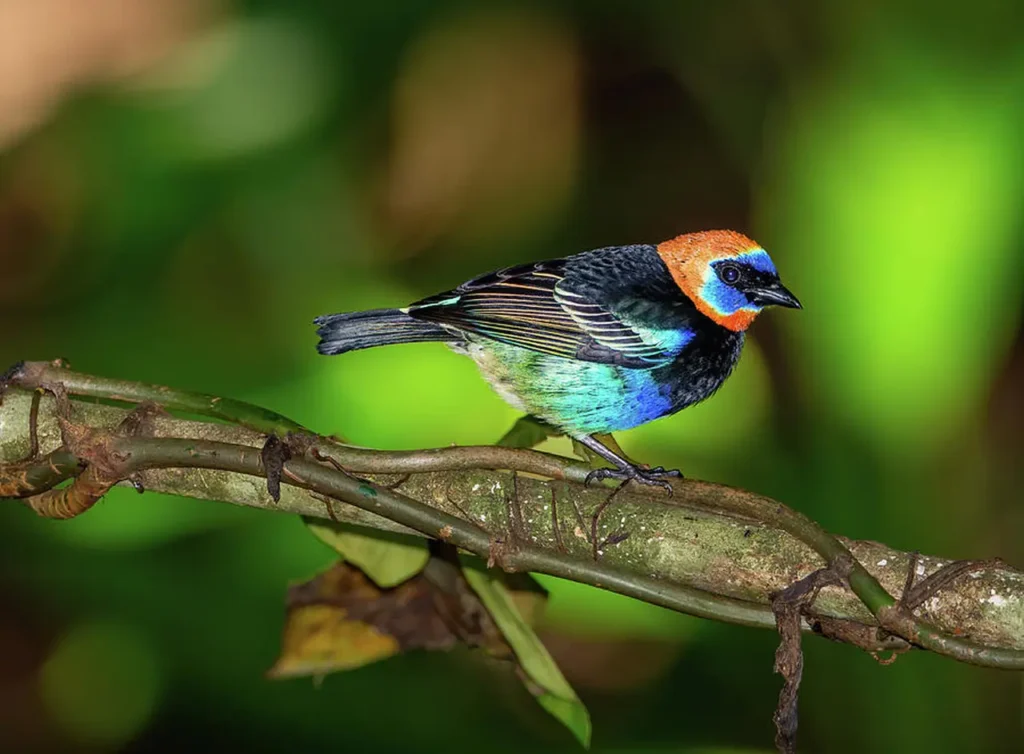
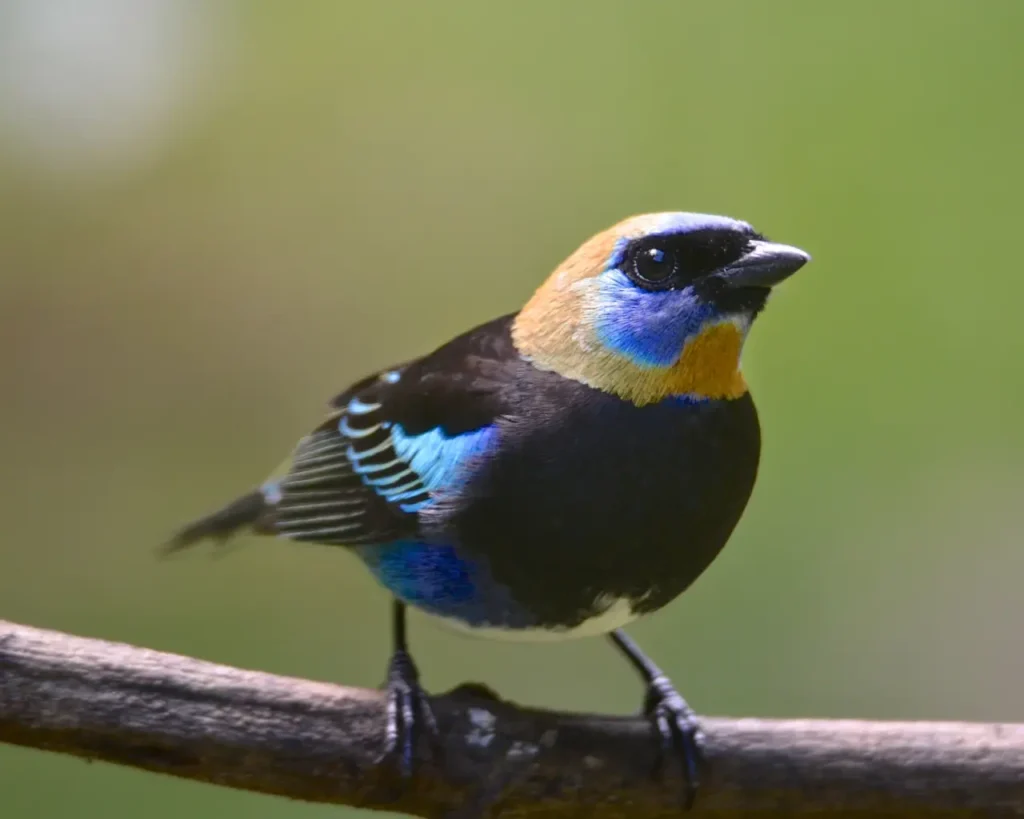
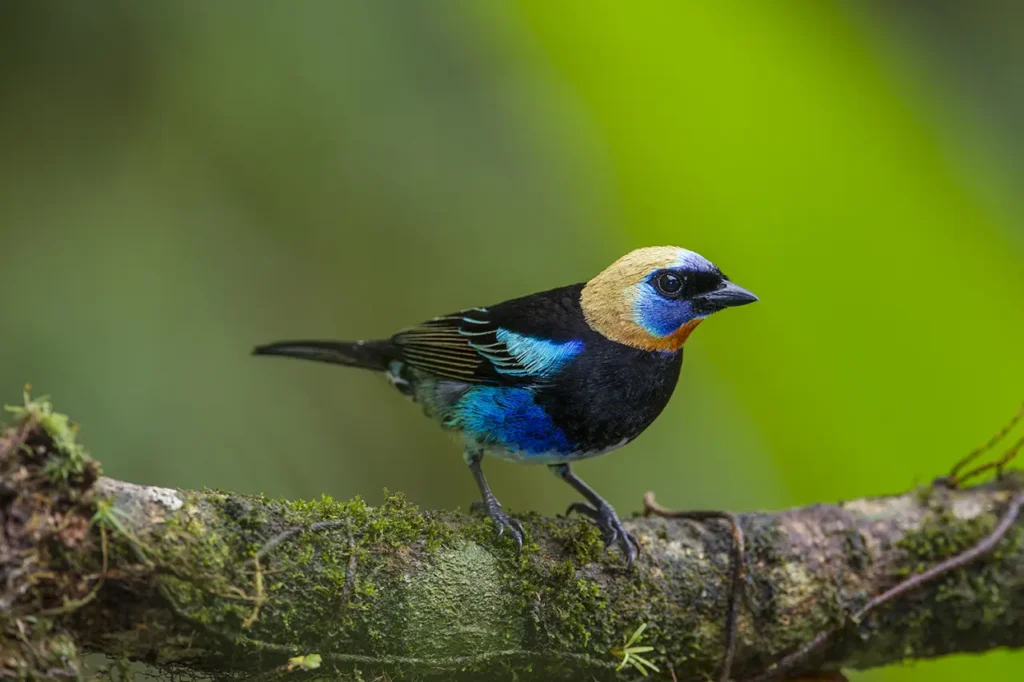
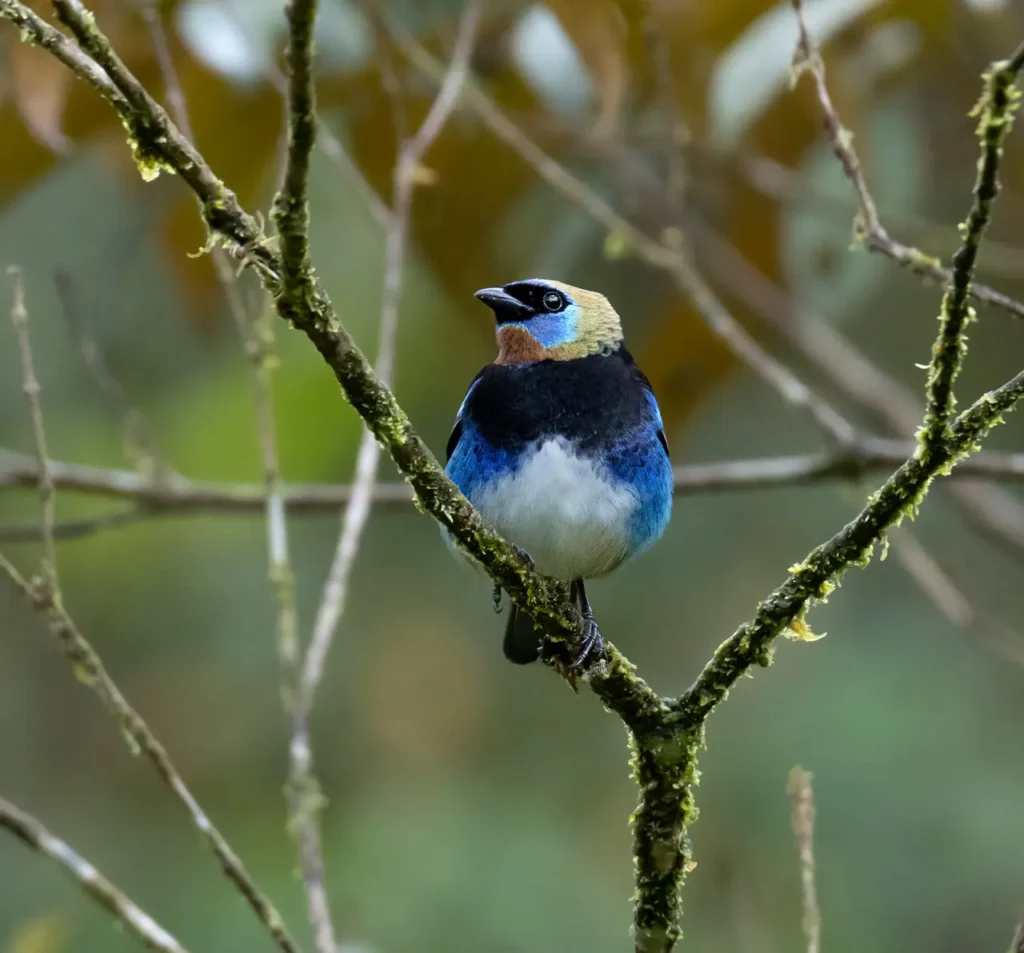
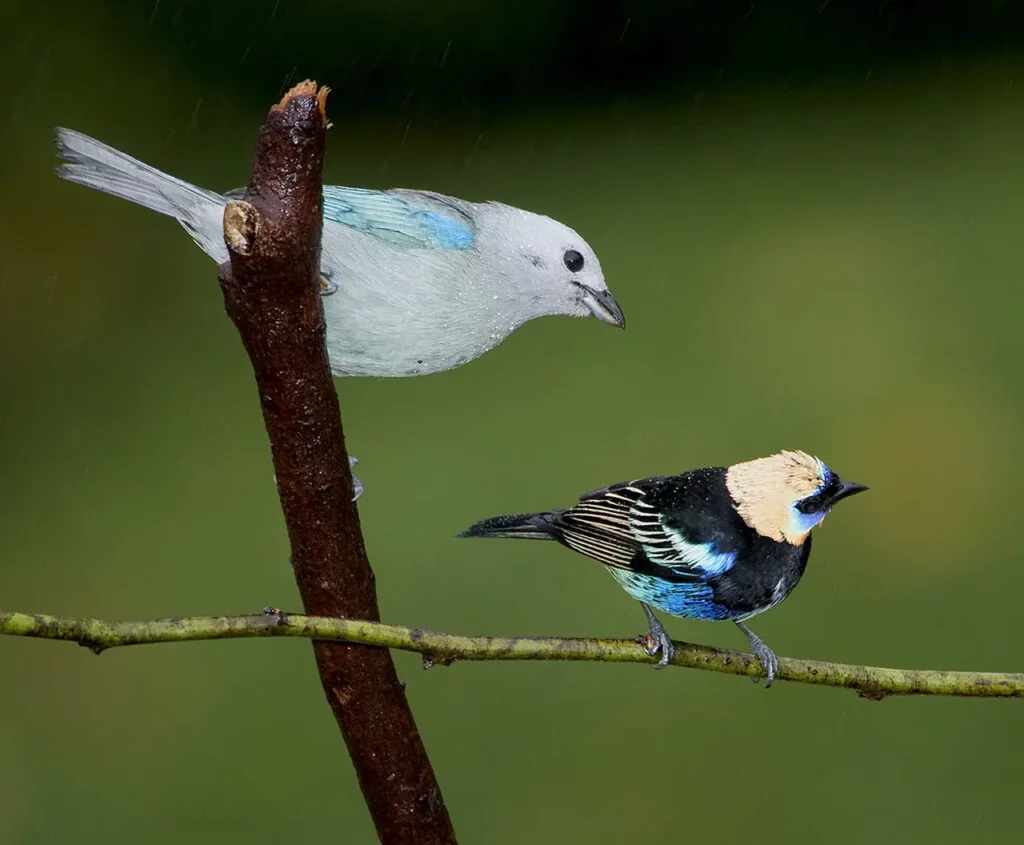
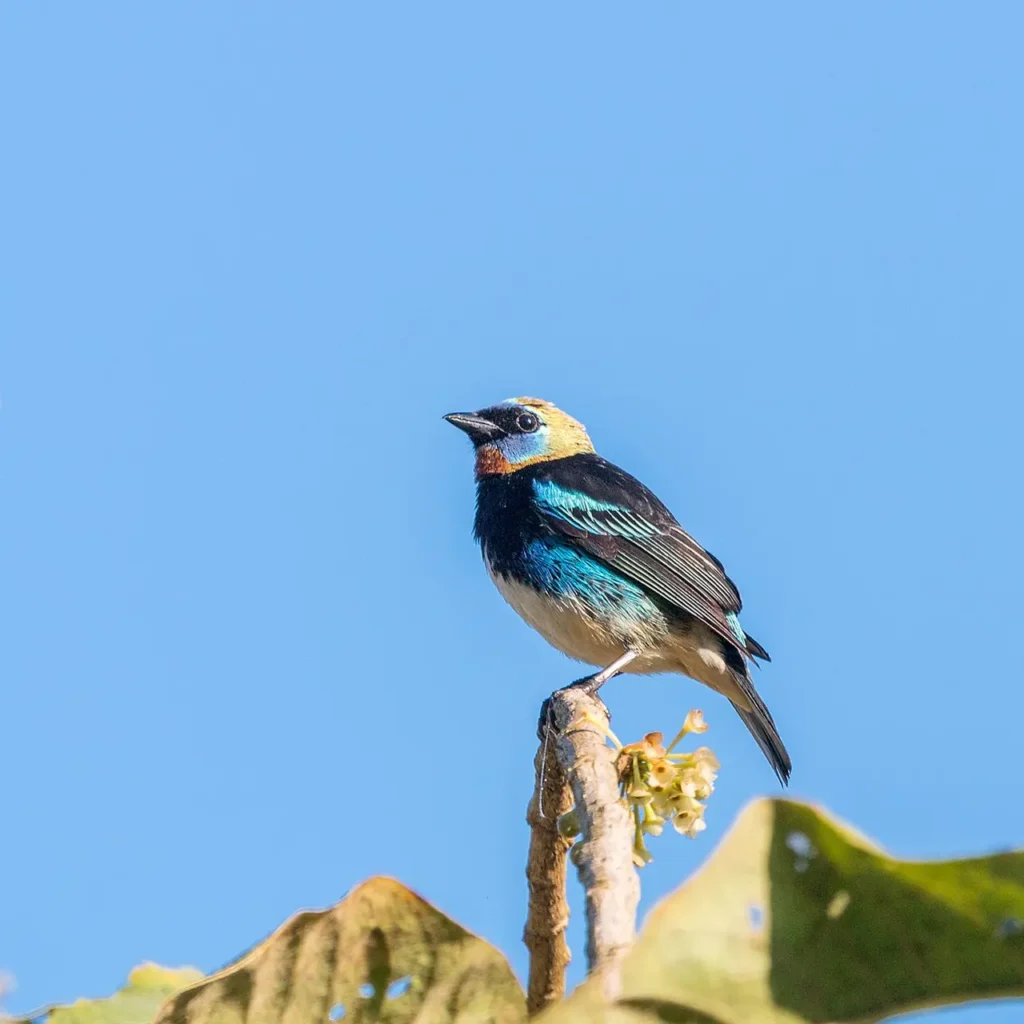
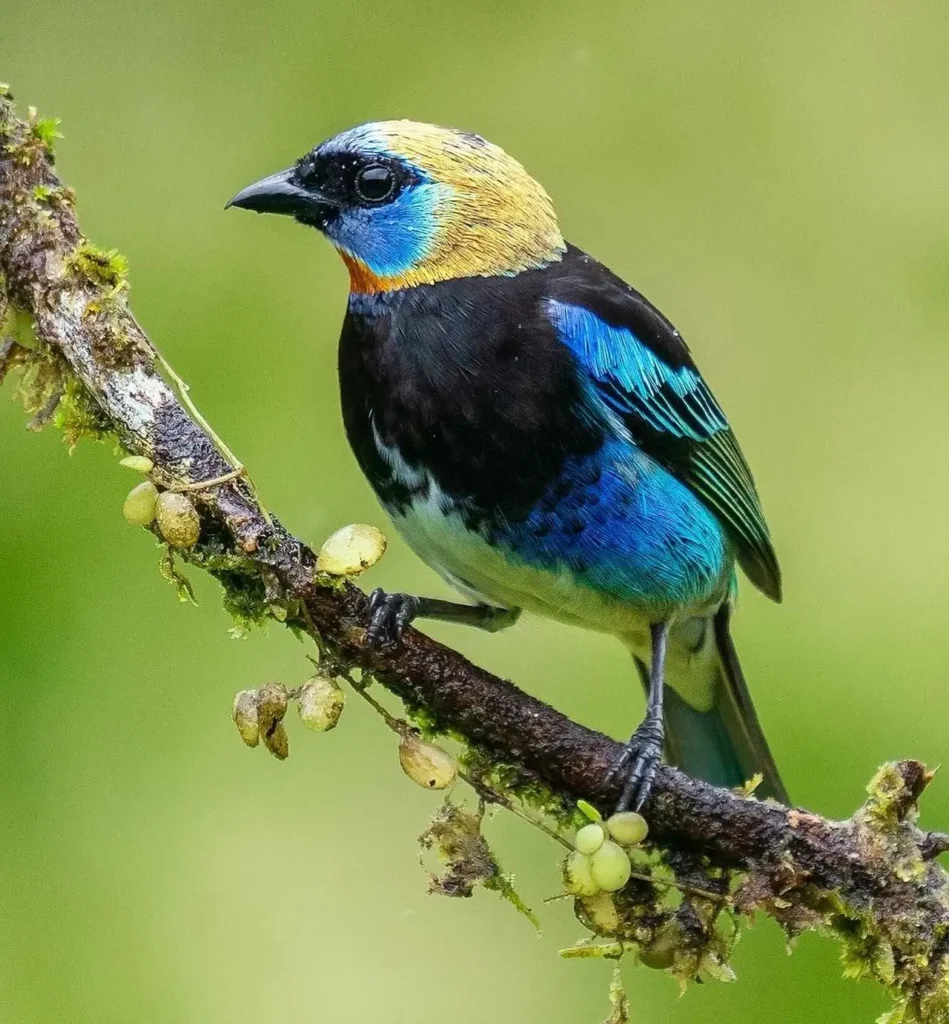
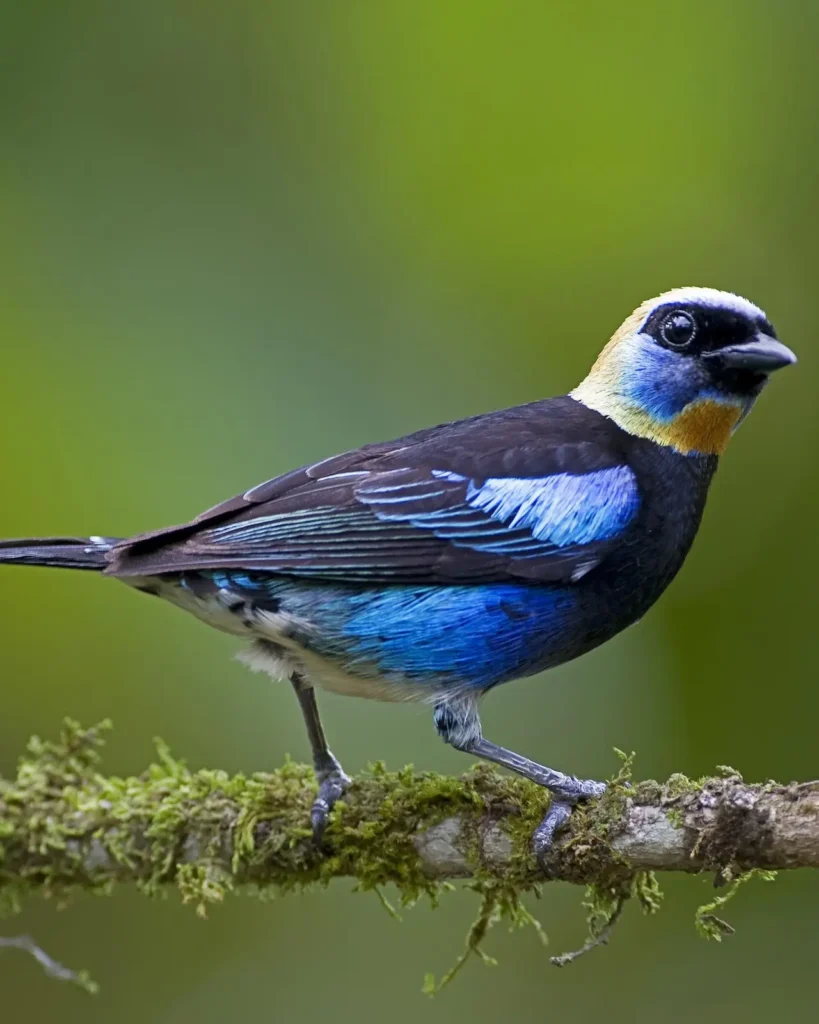
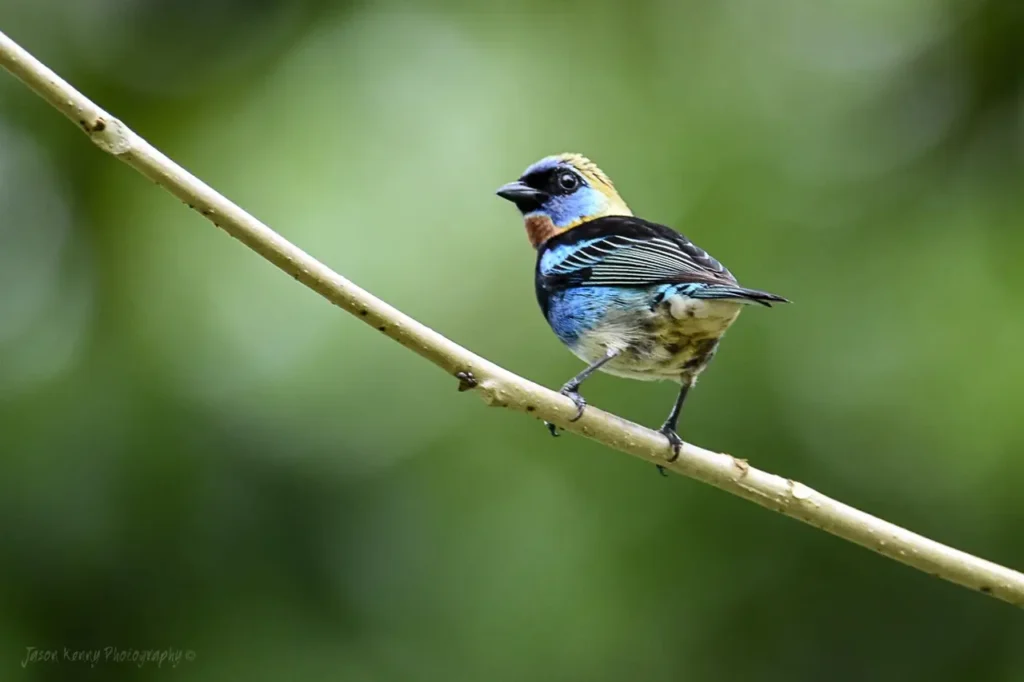
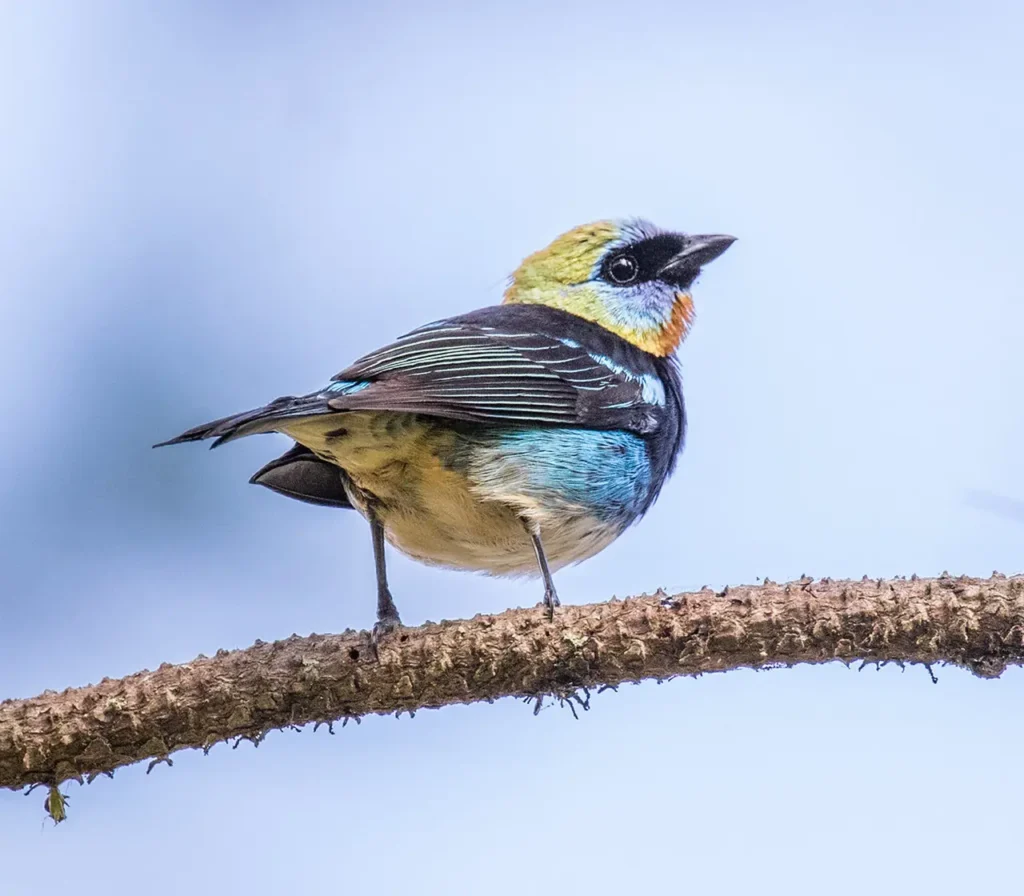
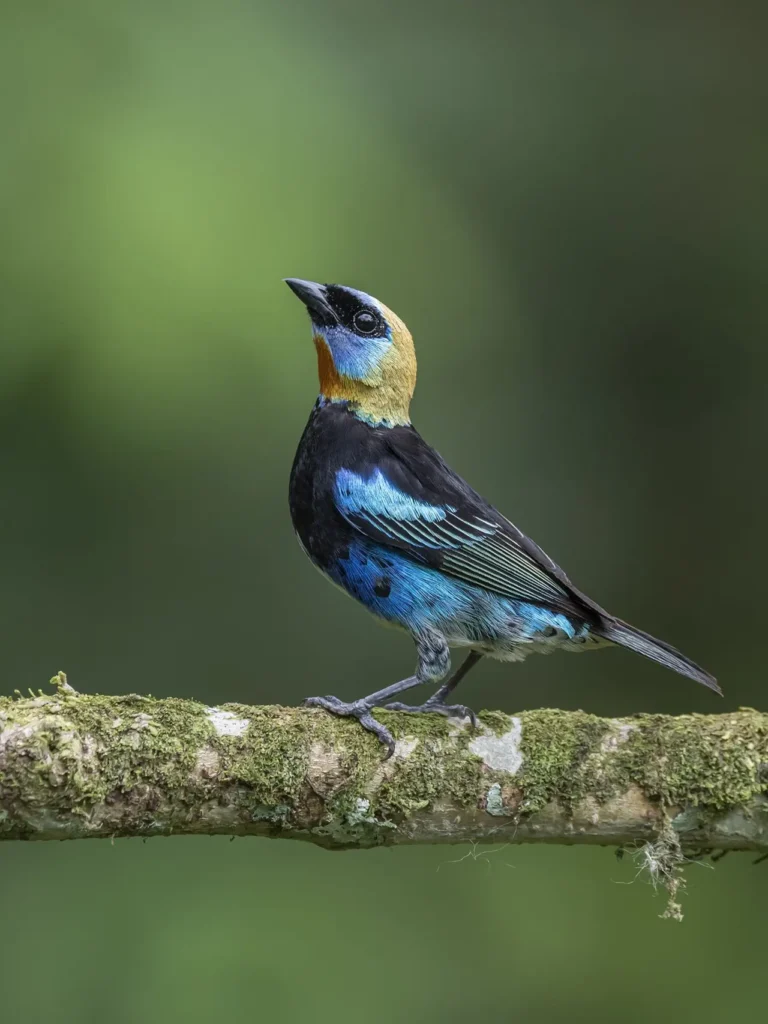
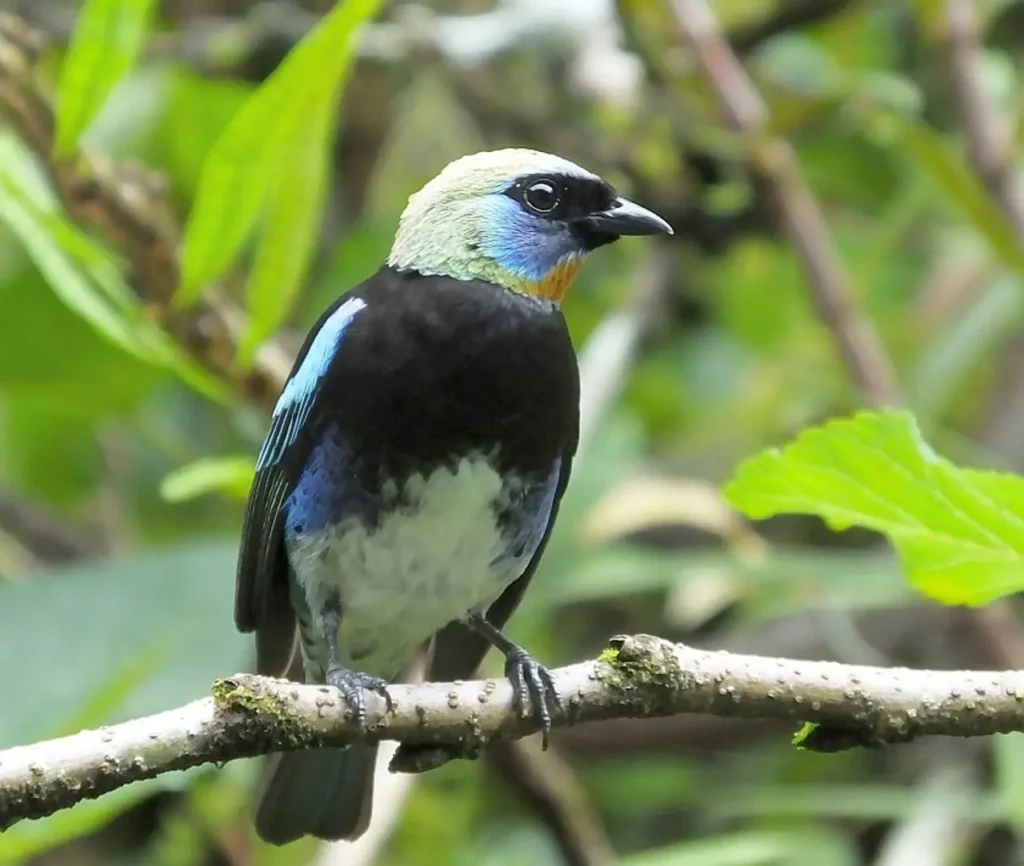
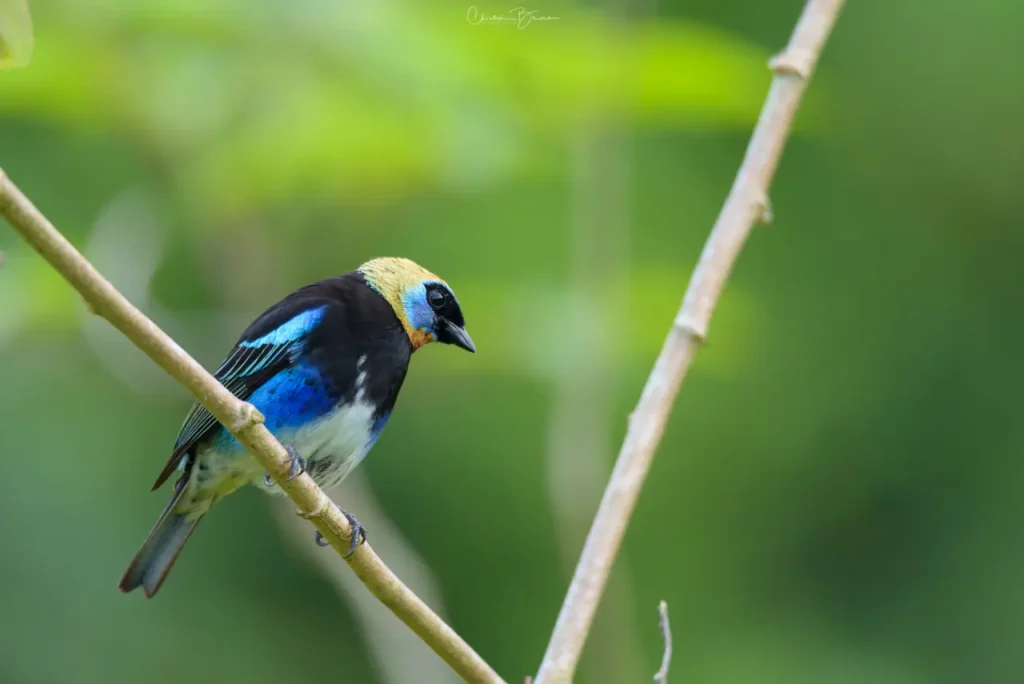
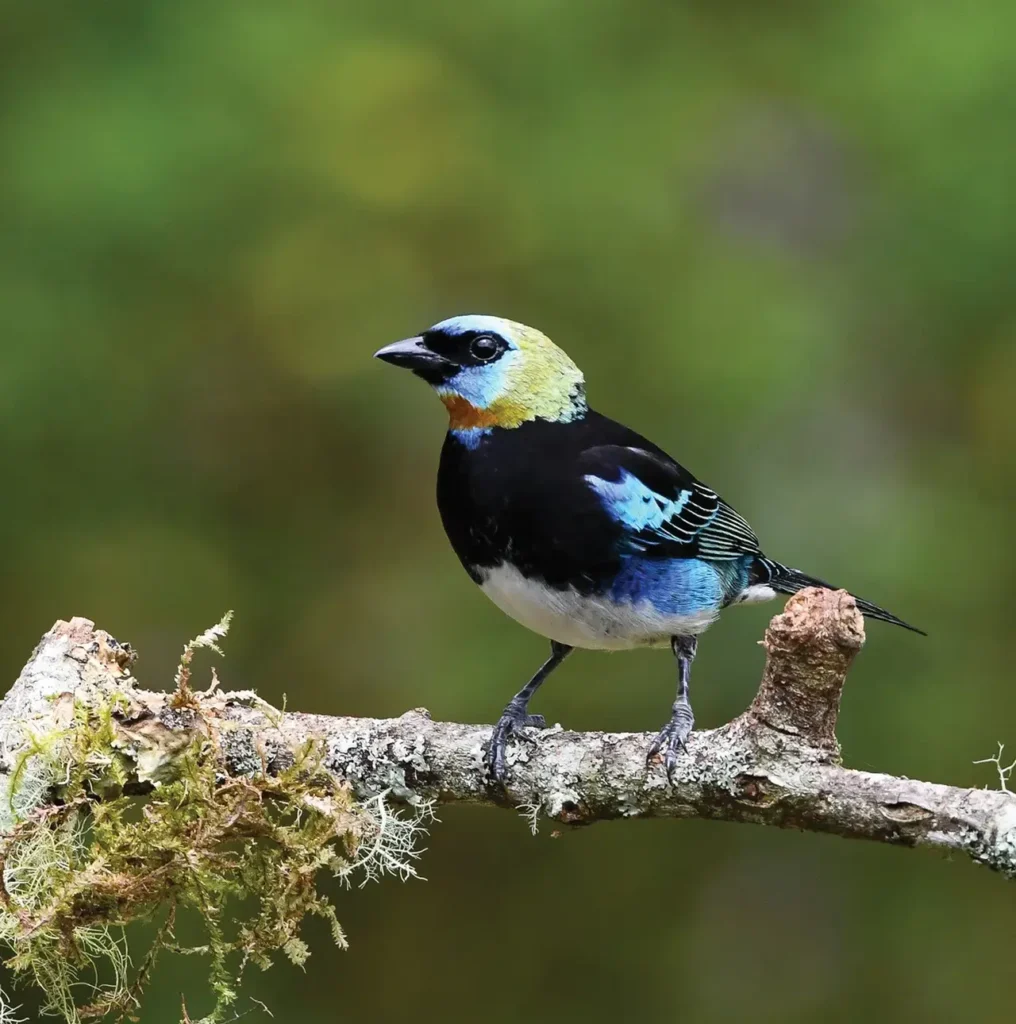
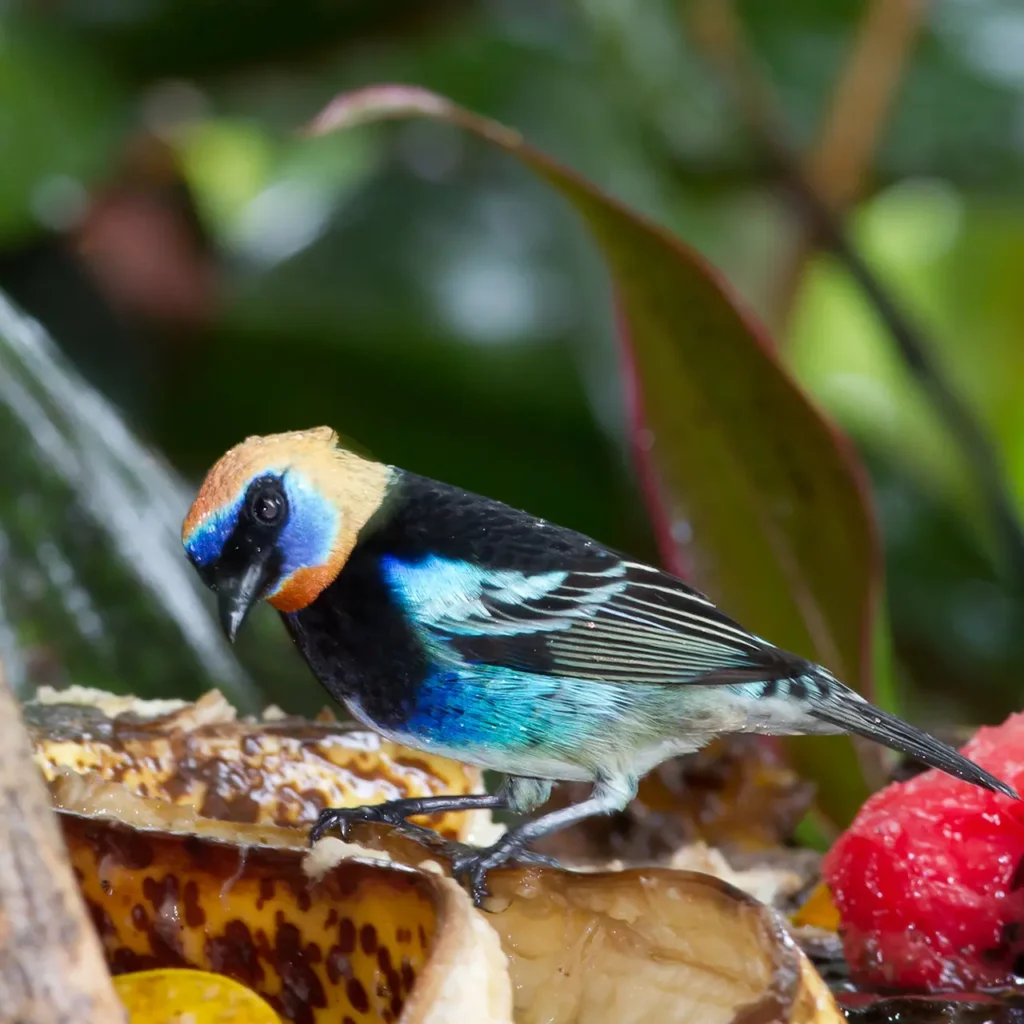
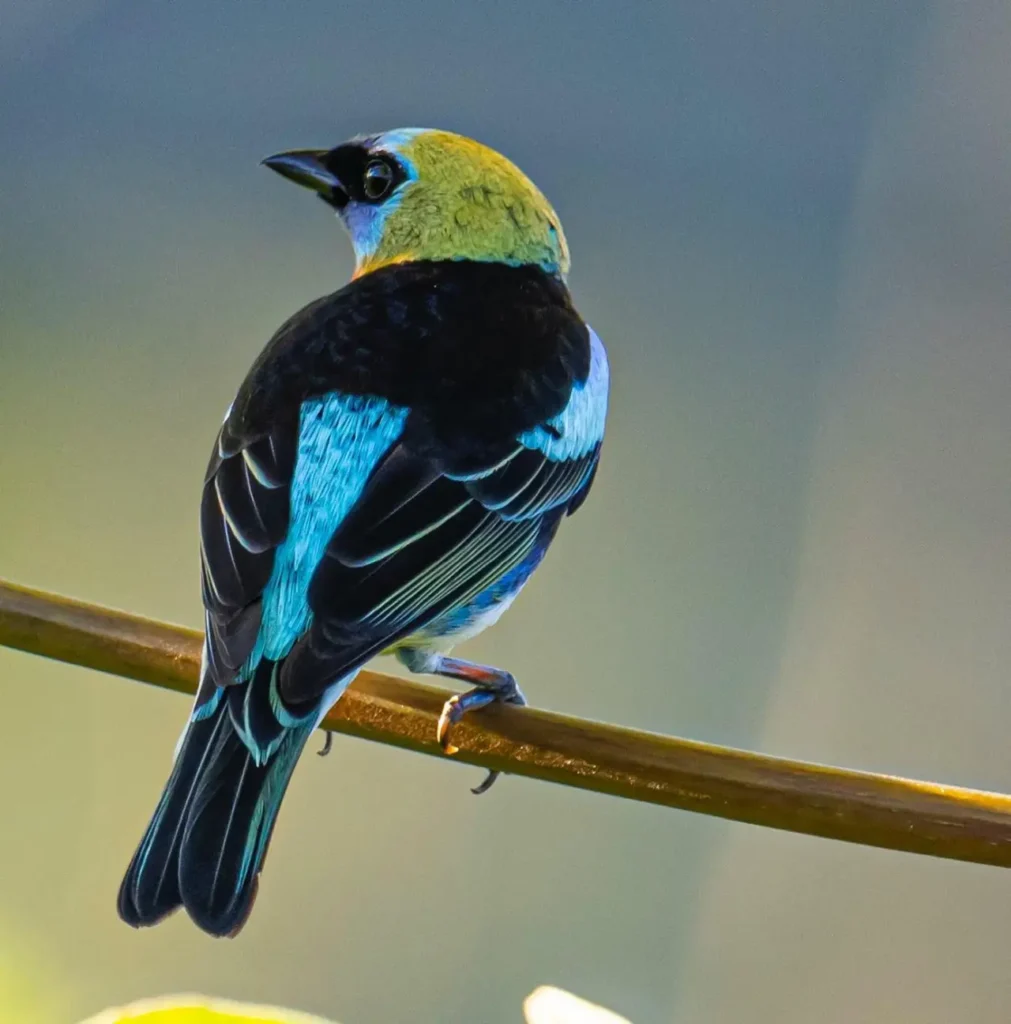
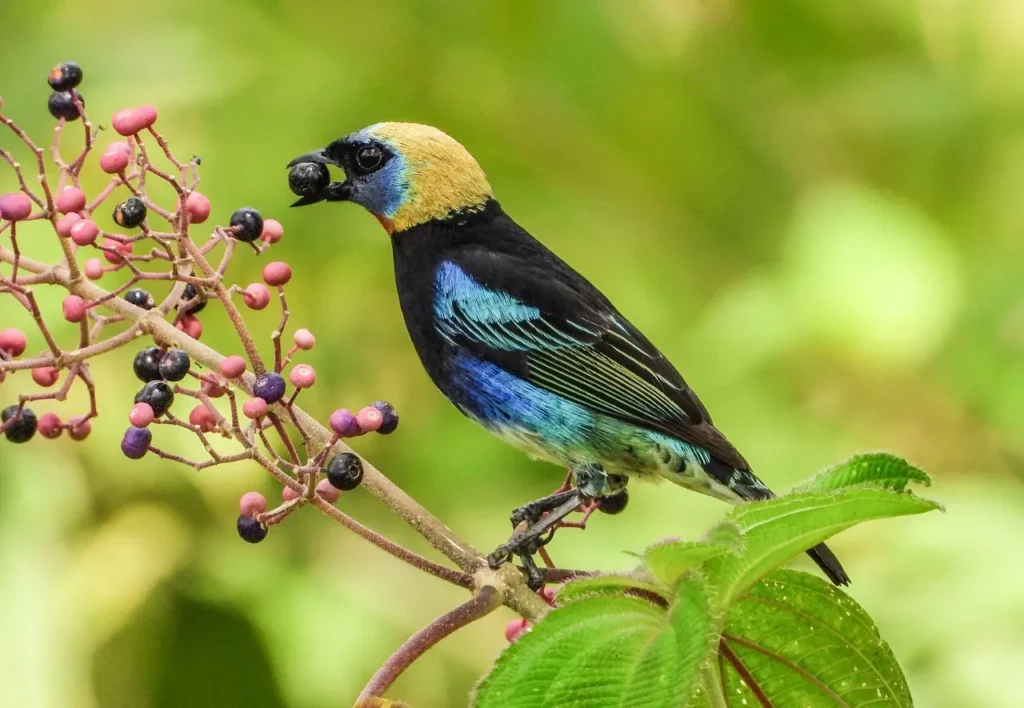
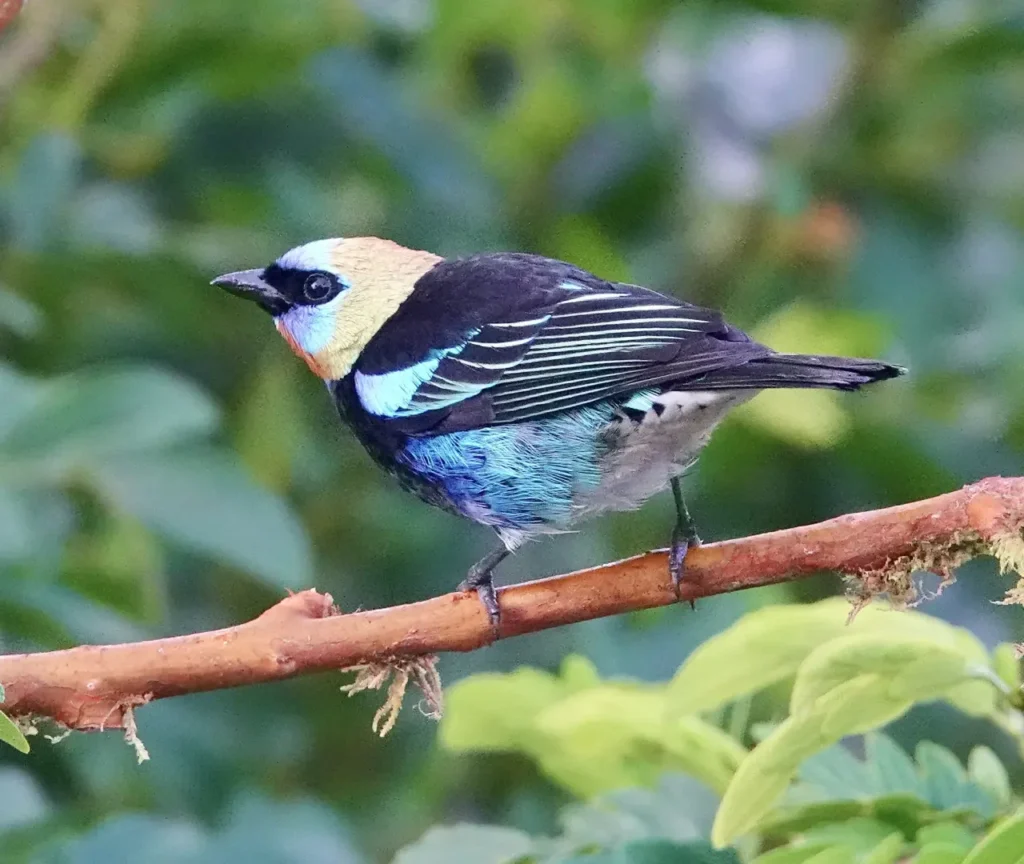
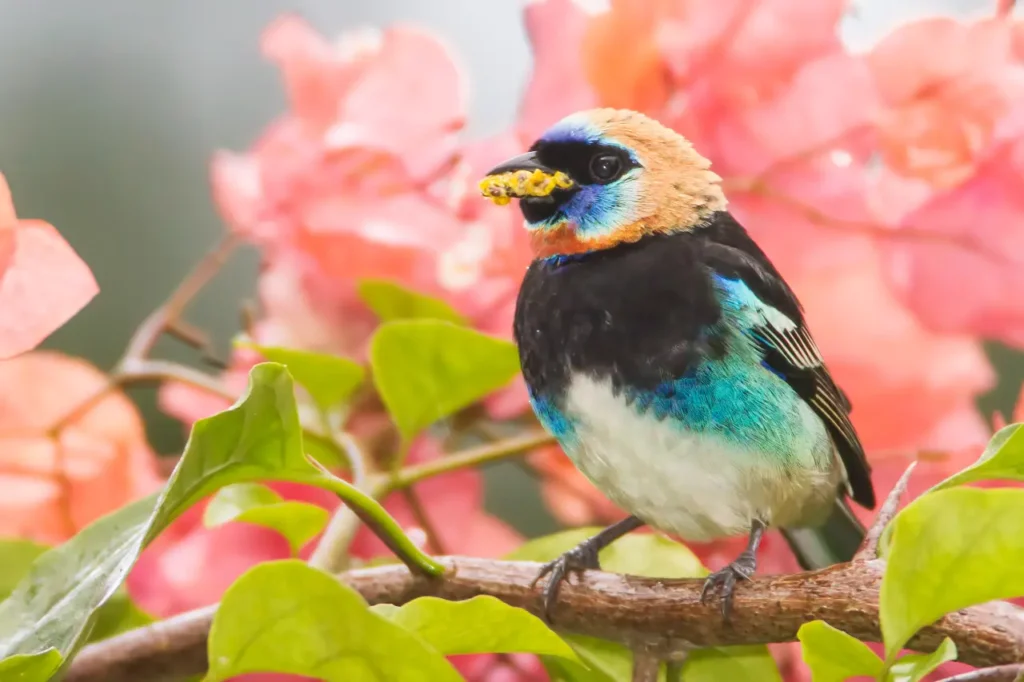
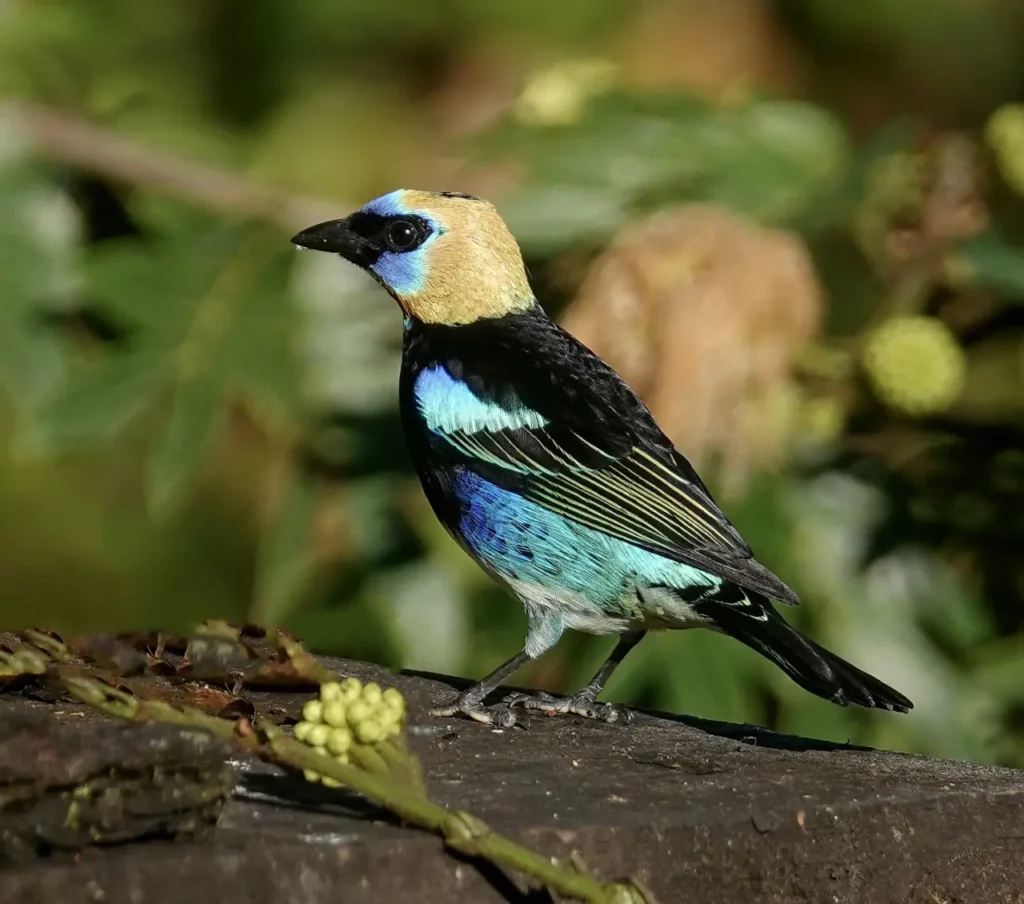
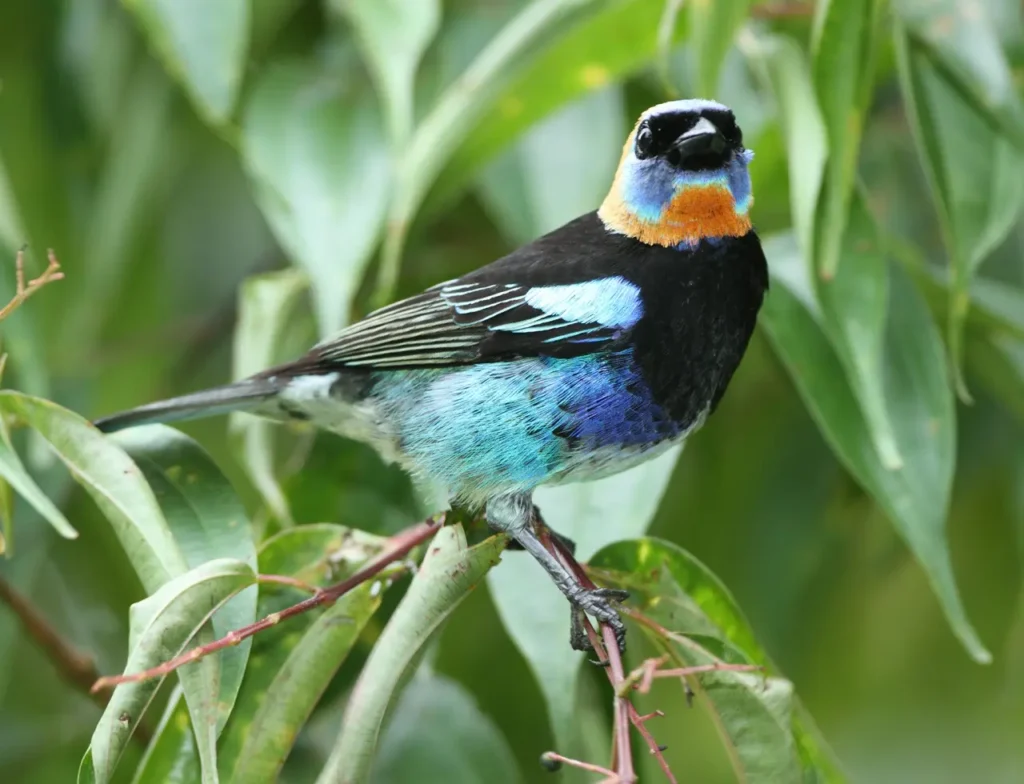
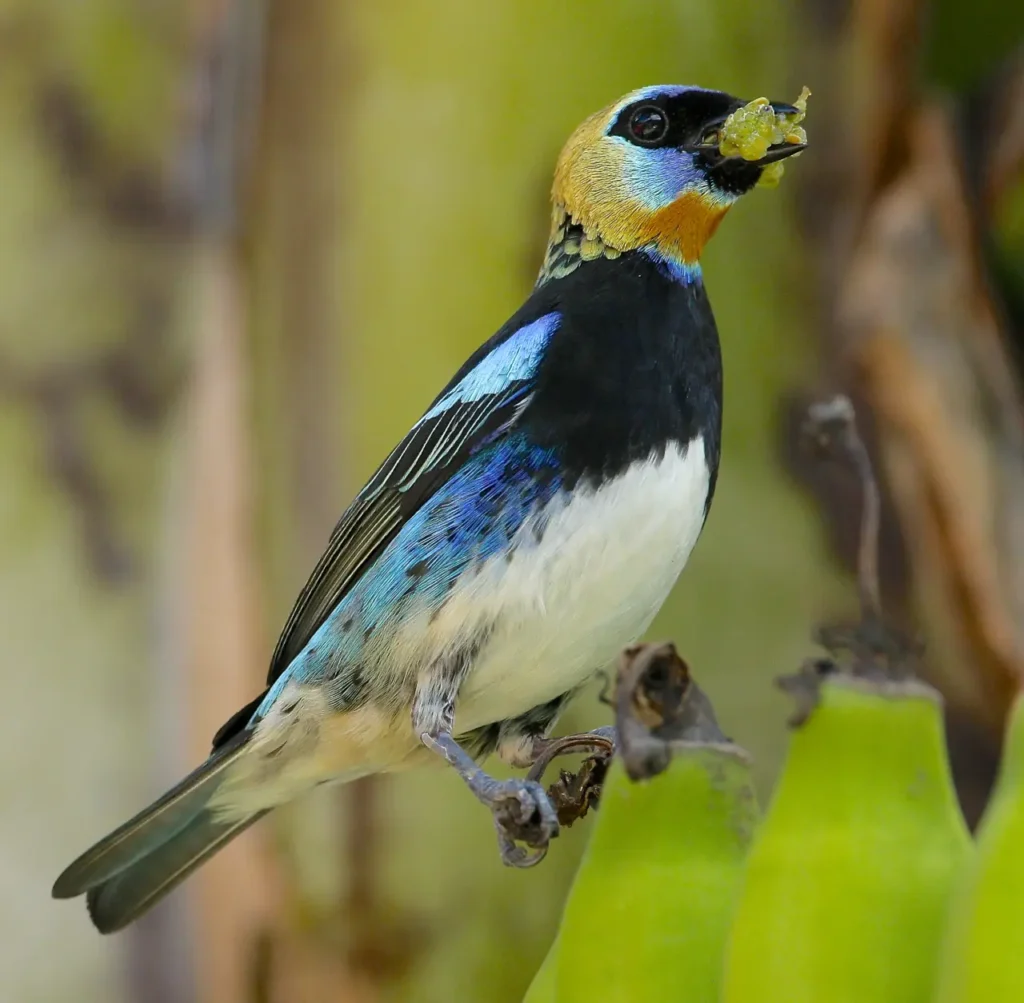
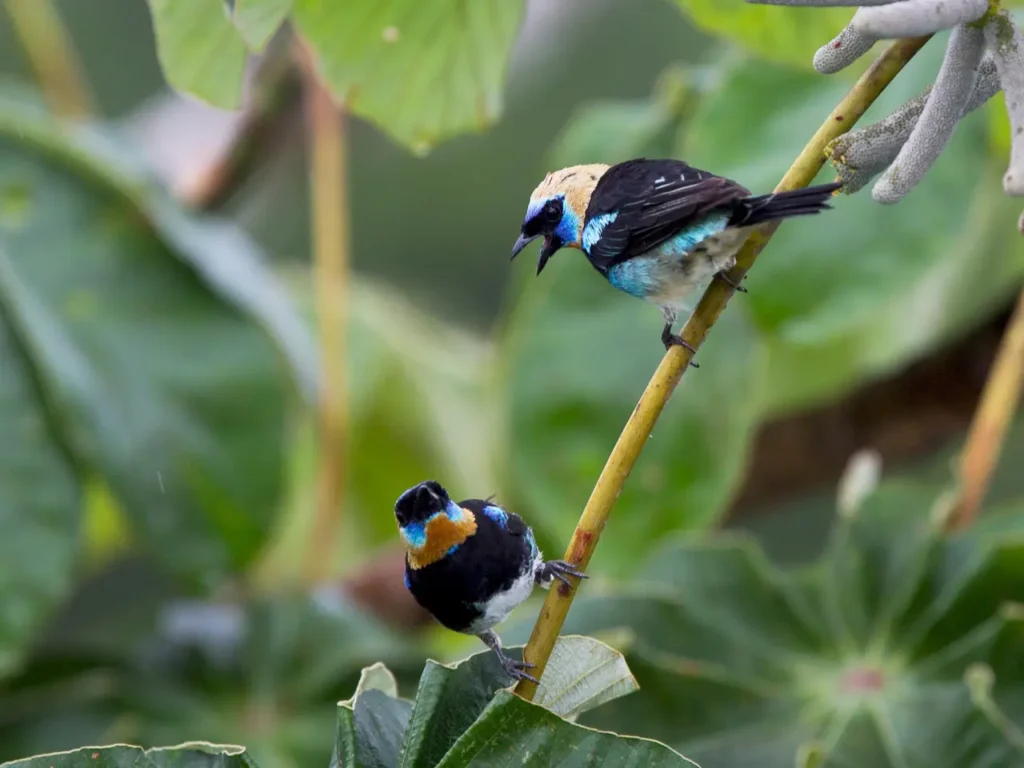
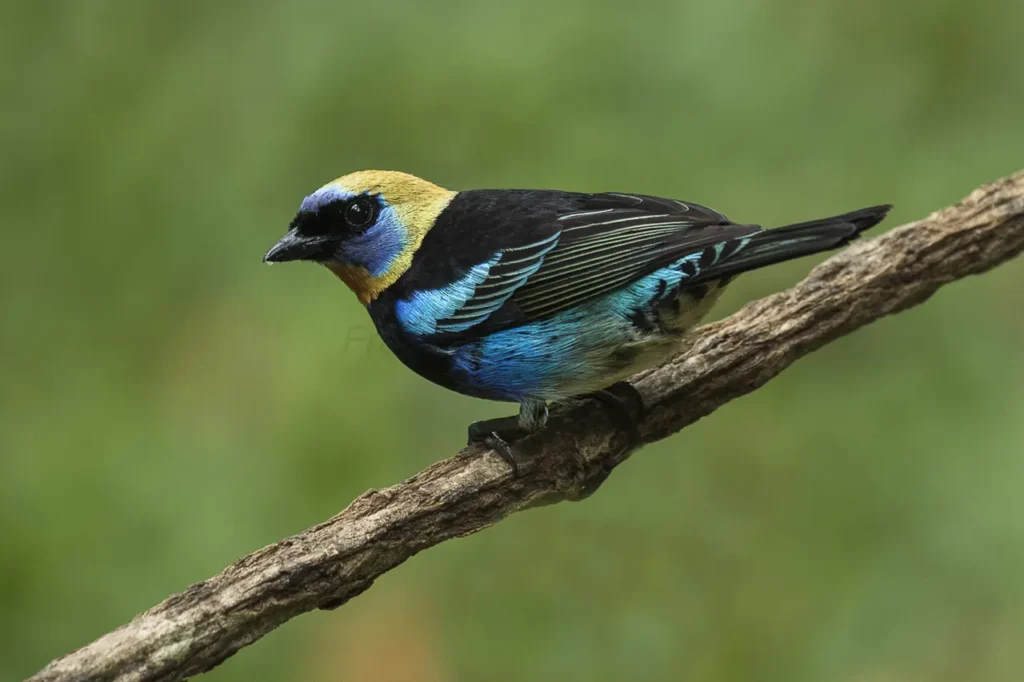
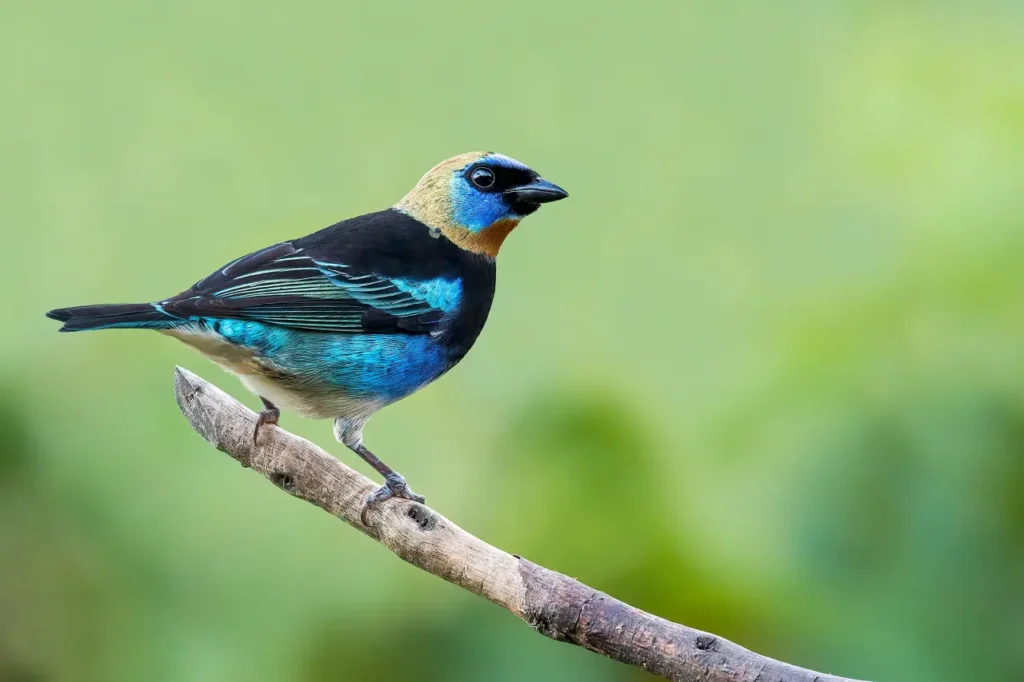
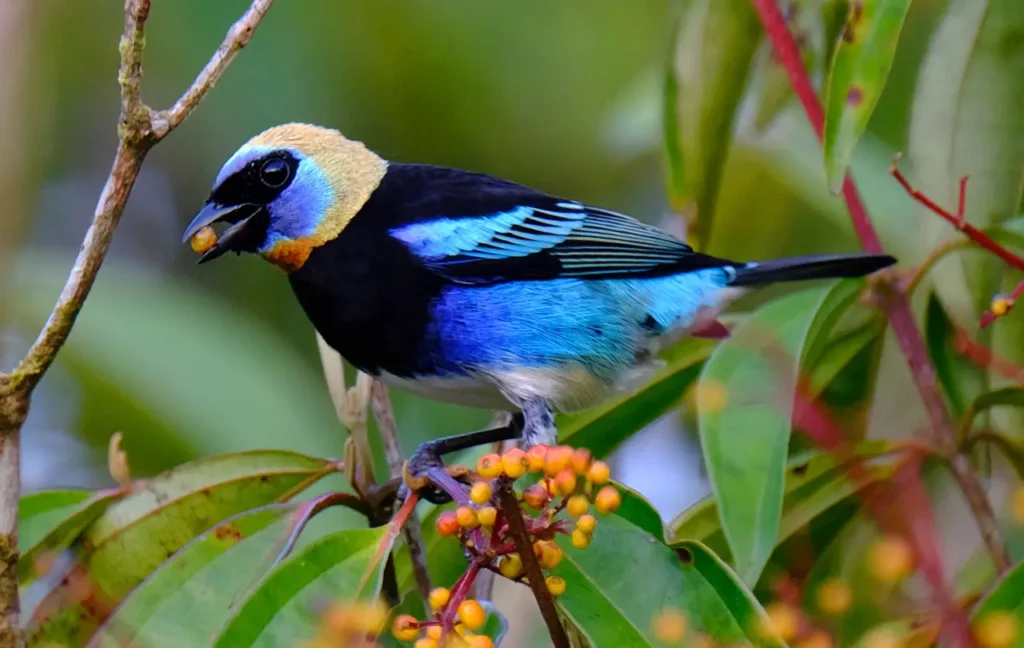
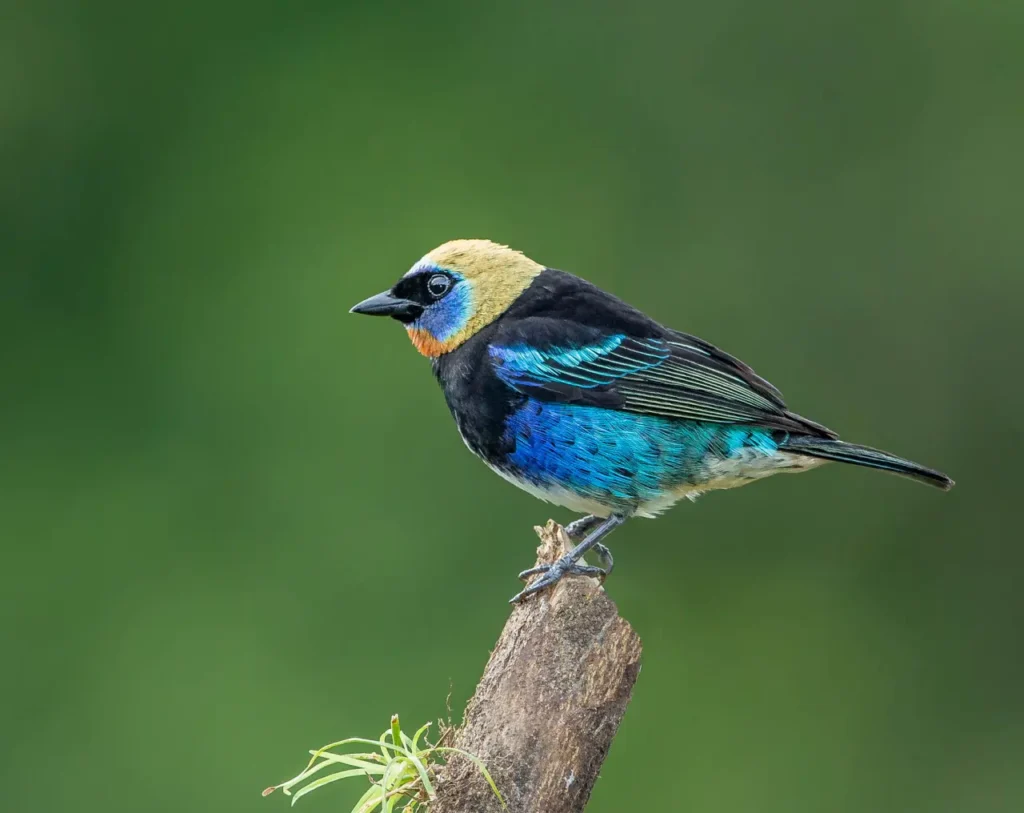
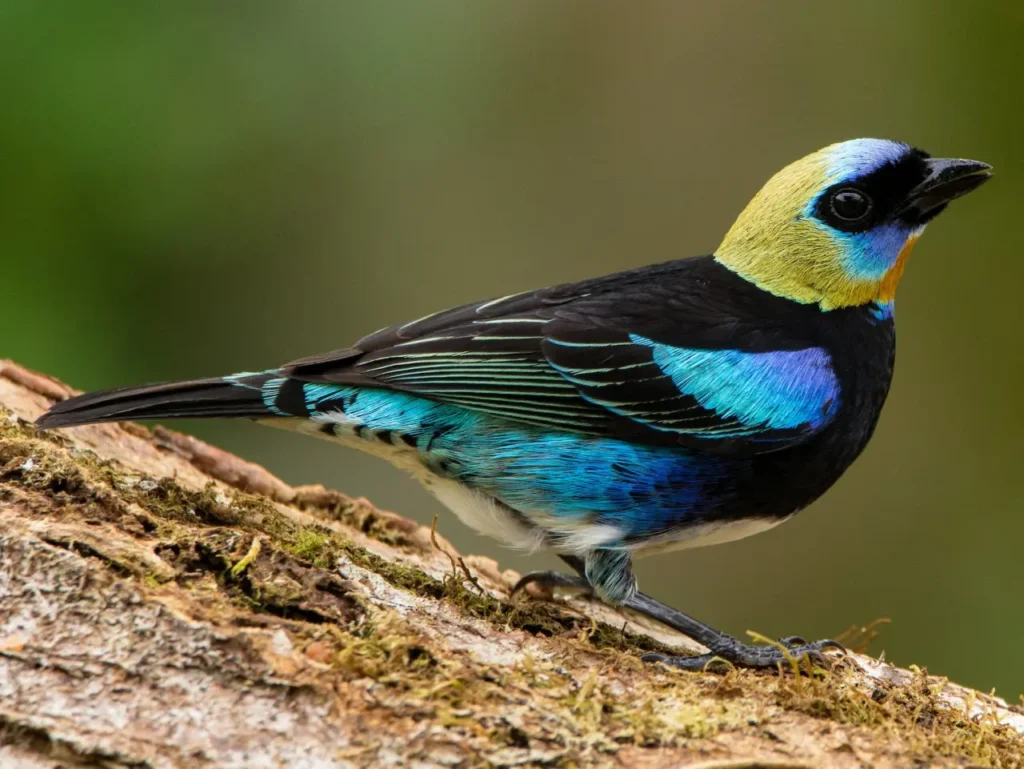
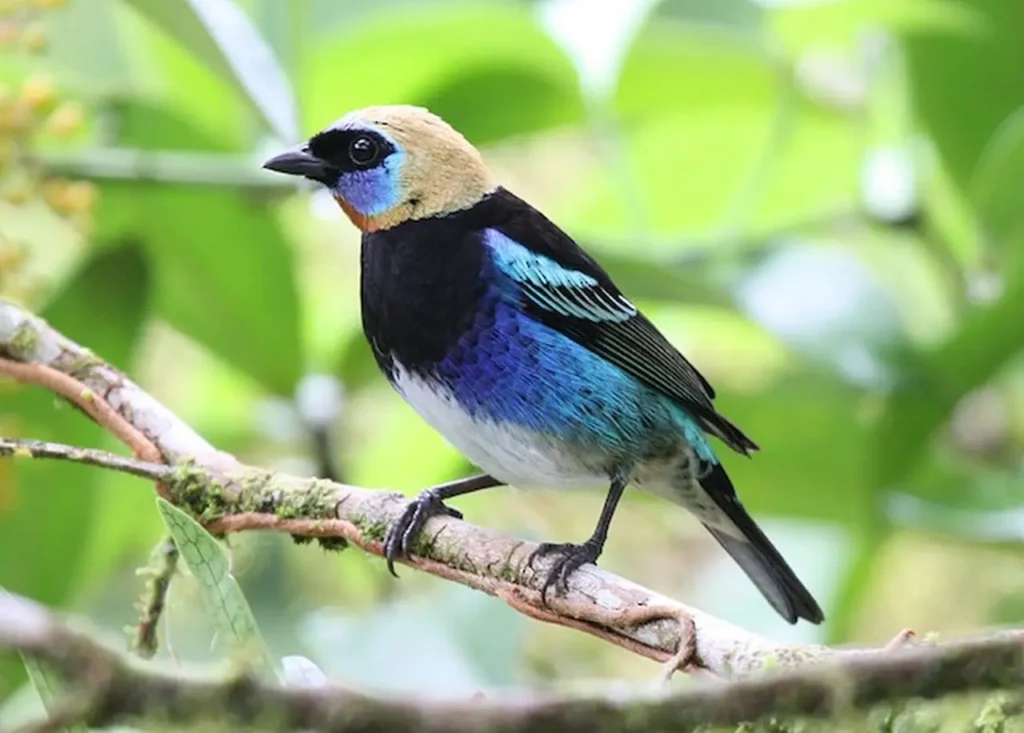
A Splendid Display of Colors
The Golden-Hooded Tanager stands out for its vibrant plumage, displaying a stunning combination of golden-yellow and black. Its head and upper body are adorned with bright golden-yellow feathers, forming a distinct hood-like crown that gives the bird its name. The contrasting black feathers on its wings, back, and tail further enhance its striking appearance. These vibrant colors, characteristic of many tropical bird species, serve both aesthetic and evolutionary purposes, attracting mates and providing camouflage within the lush forest canopies.
Habitat and Distribution
The Golden-Hooded Tanager is native to the tropical regions of Central and South America, including countries such as Costa Rica, Panama, Colombia, Venezuela, and Ecuador. It primarily inhabits the canopy and understory of humid rainforests, where it finds ample food sources and shelter. These pristine habitats provide the ideal environment for the Golden-Hooded Tanager to thrive and contribute to the rich biodiversity of the region.
Behavior and Feeding Habits
Golden-Hooded Tanagers are highly active and social birds, often found in small flocks. They possess a melodious song, consisting of a series of clear, whistling notes, which they use for communication and territorial defense. In terms of diet, these tanagers are primarily frugivorous, consuming a variety of fruits, berries, and nectar. They play an essential ecological role as seed dispersers, helping to maintain the forest’s ecosystem balance.
Breeding and Reproduction
During the breeding season, male Golden-Hooded Tanagers engage in elaborate courtship displays to attract females. These displays involve fluttering flights, wing-spreading, and vocalizations to assert their dominance and appeal to potential mates. Once a pair has formed, they build a small cup-shaped nest, usually situated in the dense foliage of trees or shrubs. The female lays a clutch of two to three eggs, which both parents take turns incubating. After the eggs hatch, both parents participate in feeding and caring for the young until they fledge and become independent.
Conservation Status and Threats
The Golden-Hooded Tanager is currently classified as a species of least concern by the IUCN Red List, thanks to its relatively stable population and wide distribution range. However, like many tropical bird species, it faces potential threats due to habitat loss caused by deforestation and illegal pet trade. Conserving the forests and promoting sustainable land-use practices are crucial for preserving the habitat and ensuring the long-term survival of this captivating species.
A Symbol of Tropical Splendor
The Golden-Hooded Tanager serves as a symbol of the breathtaking beauty found within the diverse tropical ecosystems of Central and South America. Its brilliant colors, melodious songs, and active nature bring joy and wonder to those fortunate enough to witness it in its natural habitat. As we continue to appreciate and protect our planet’s natural treasures, let us strive to safeguard the forests and habitats that support the Golden-Hooded Tanager and the myriad of other species that contribute to the vibrant tapestry of life in the tropical rainforests.
